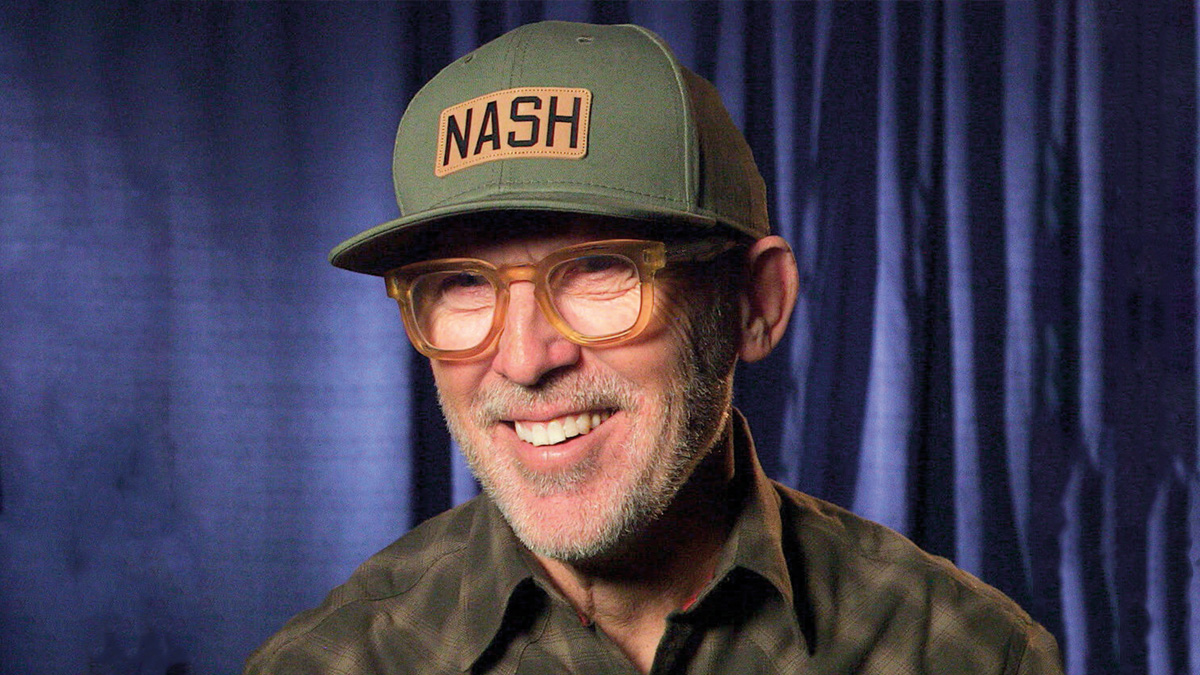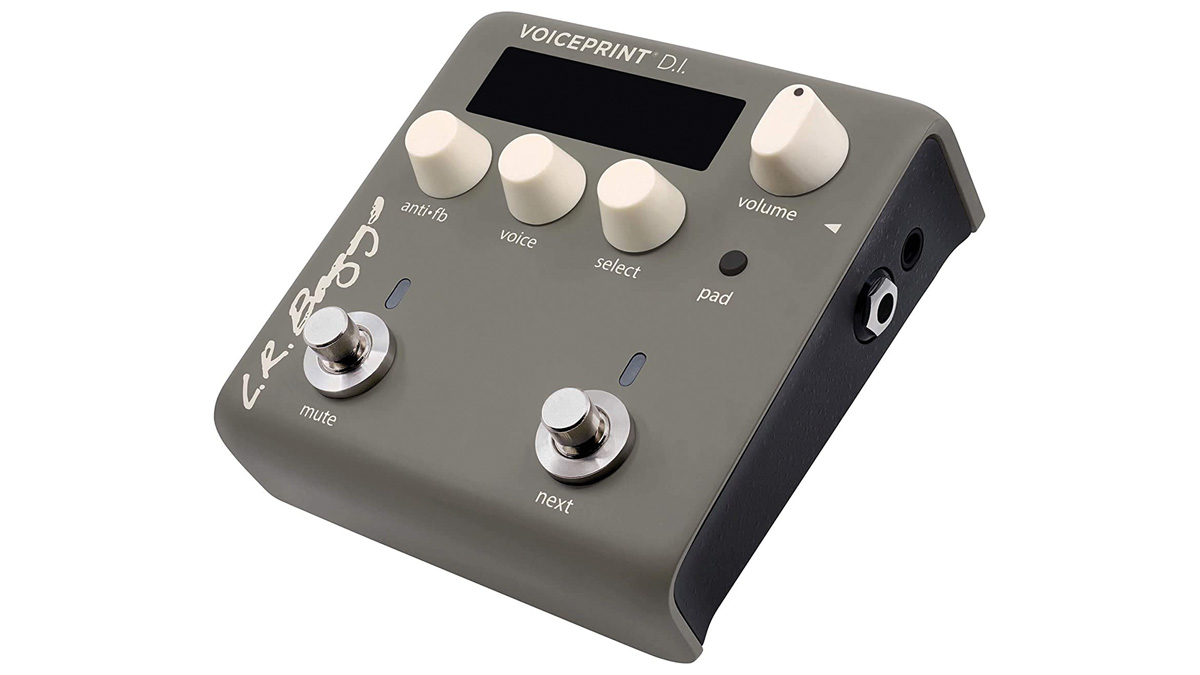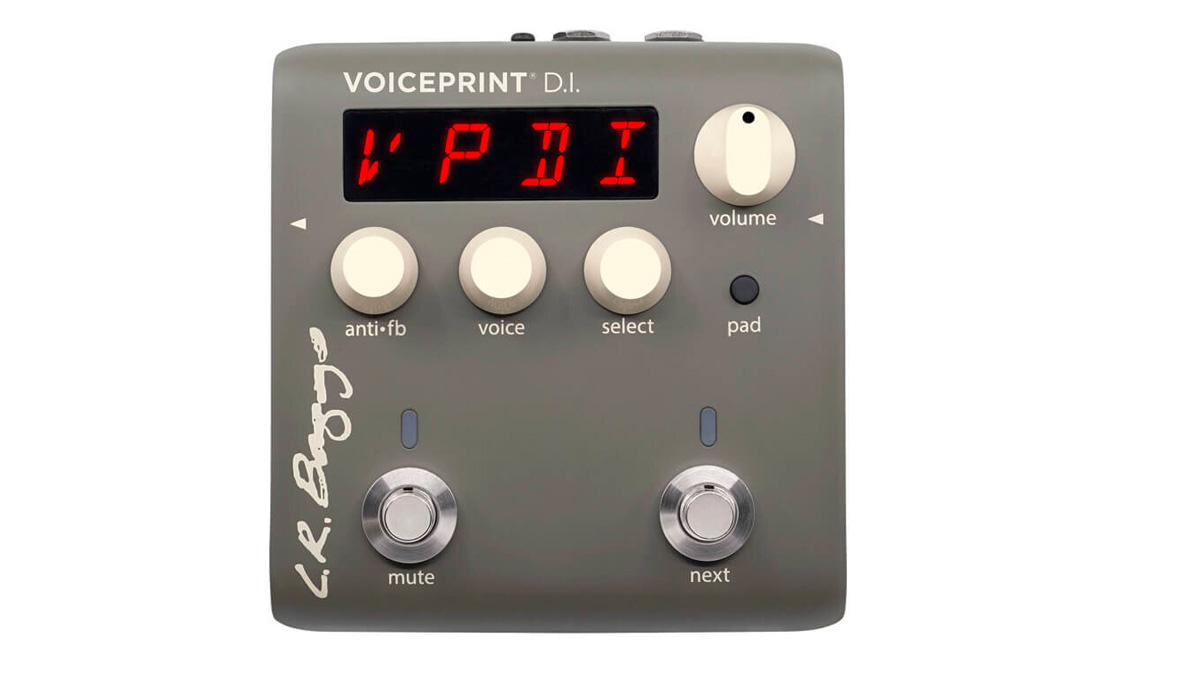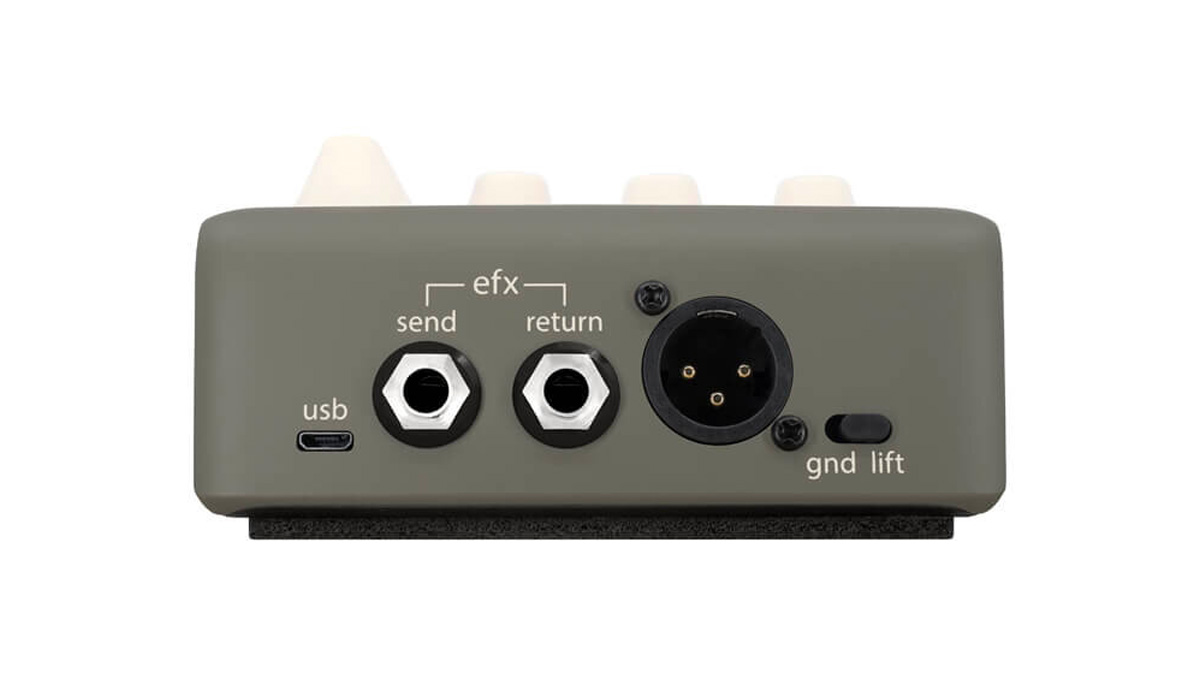Lloyd Baggs on His Digital Conversion and the Development of the Voiceprint Acoustic D.I.
L.R. Baggs's Voiceprint might well be the acoustic guitar's iPhone moment, revolutionizing acoustic amplification.

For more than four decades, Lloyd Baggs and his company, L.R. Baggs, have routinely upped the ante for acoustic-electric tone. Baggs began as a luthier working closely with Ry Cooder.
Through a bizarre incident involving a guitar Baggs made for the guitarist, Takamine’s pickup system, and Cooder’s disdain for his unwieldy road rig, Baggs became focused on acoustic amplification.
He’s been an analog man all along, creating ever-improving pickup systems, preamps, and direct boxes. More recently, Baggs released the Synapse Personal P.A. and a range of Align acoustic effects.
Both earned Guitar Player Editors’ Pick awards and represented the company’s first wadings into the digital waters. Baggs’ newest innovation, the Voiceprint D.I. ($399 street) is a headlong dive into the deep end. Voiceprint is a direct-input stompbox for acoustic-electric guitars that works in conjunction with Baggs’ new AcousticLive app on iPhone via Bluetooth.
The idea for the Anthem was to invent a mic that could capture the guitar’s entire range and sound like it was placed outside
Using the iPhone’s microphone, it maps the guitar’s acoustic sound qualities while taking the player’s style into consideration. Voiceprint concurrently gathers pickup information and relays it to the iPhone. The app is designed to reckon both signals and create a custom filter that mitigates troublesome characteristics and highlights those that are most appealing.

The resulting tone may sound as if it were captured using a great studio mic, but nothing is added, other than a bit of ambience due to the guitar’s distance from the phone. Voiceprint also identifies feedback hot spots and creates a custom cancellation curve, plus a customizable EQ. Saved presets are sent to the pedal for easy recall in musical environments.
Voiceprint works its magic using Impulse Response signal processing, the same technology behind the Kemper Profiler amplifier and Fishman’s breakthrough Aura imaging pedal. In fact, Larry Fishman at Fishman Electronics is Lloyd Baggs’ primary competitor. Their friendly rivalry has led to a host of fantastic inventions on the acoustic-electric frontier, and we guitar players continue to reap the rewards.
Get The Pick Newsletter
All the latest guitar news, interviews, lessons, reviews, deals and more, direct to your inbox!
What’s the Voiceprint origin story?
It started with the Fishman Aura, and I’ve got to give Larry props for doing that. He’s a real innovator. A number of years ago, when Pete Newport owned Breedlove and Fishman had come out with the Aura, Pete scheduled Larry and me to address his reps at the NAMM Show.
His reps said, “What’s your answer to the Aura?” I didn’t have one. So the Anthem was born out of that. It was called Anthem because it was our answer to the Aura.

How so?
I’ve never been a fan of modeling. It doesn’t feel like the guitar you’re playing, since the model didn’t grow from that guitar. Our company has always been about delivering a real feel, maybe even before sound. So when the Aura came out, I thought it was going in the right direction, but its images weren’t based on my guitar, and I didn’t want my guitar to sound or feel like anyone else’s.
I’m proud of what we’ve accomplished with analog, but about four or five years ago I started to feel like a blacksmith at the turn of the last century
The question was, “How am I going to capture the sound of my guitar more faithfully?” As [fingerstyle guitarist] Doug Young said recently on a forum, “The worst mic sounds better than the best pickup.” I started working further with microphones. The Duet was probably the first blended system with a pickup and a mic in a guitar, but we used the microphone mostly to deodorize the pickup.
We set the crossover just so you could get some of the texture in the high end because you couldn’t get very far down into the frequency response of the guitar without trouble. The inside of a guitar sounds like a garbage can. It’s full of echoes and stuff.
The idea for the Anthem was to invent a mic that could capture the guitar’s entire range and sound like it was placed outside. We did that by creating a pressure-zone microphone.
It won’t hear your voice, and it doesn’t hear the trashy sounds inside the guitar either, but it will pick up wood vibrations within the pressure zone. We place it three millimeters from the top below the undersaddle pickup, which adds a little more stability to the system.
We still use a crossover, but we run the mic down to 250 cycles, which is the low midrange. On a guitar, the money is in the midrange. Now we can essentially capture the voice of the instrument with the microphone instead of the pickup. That flips the equation.
The pickup becomes almost like a subwoofer. Instead of getting maybe 20 percent microphone over the top of a pickup, it’s 20 percent of the pickup supplementing 80 percent from the mic. The Anthem is our ultimate analog achievement in representing the most accurate sound of the guitar. The Anthem system was our best combination of fidelity and stability until the Voiceprint.

When and how did the Voiceprint project get underway?
I’m proud of what we’ve accomplished with analog, but about four or five years ago I started to feel like a blacksmith at the turn of the last century. Pretty much everything in our daily lives has become digital, but, really, two-thirds of what you’re hearing in every digital-audio situation is still analog.
The guitar sound and the sound coming out of the speaker are both analog; only the middle part is digital. Since we’d gone to great lengths to make our analog circuits sound as good as a Neve or an SSL console, all we needed to learn was the middle part.
For Voiceprint, we assembled an international team of PhDs, including Dr. Jonathan Abel. He’s a professor at Stanford in artificial intelligence and the co-founder of Universal Audio. But it all started by creating the digital reverb for the Synapse P.A. in-house with our digital engineer, Justin Rucker, and our lead engineer, Tommy Linn.
When he introduced the idea of using the iPhone’s mic for Voiceprint, we all thought it was a joke. We considered its audio quality like a G.I. Joe Walkie Talkie. But the iPhone mic turned out to be a fantastic tool.

How does it work?
There are all sorts of settings you can customize with the iPhone’s mic. Our app turns off everything that’s not useful and transforms it into a measuring device.
We use Impulse Response measurements to learn everything about your guitar and the way you play it, and our design is such that it can even be done in a noisy environment because the background noise is filtered out. We’ve essentially taken the room out of the equation.
Simultaneously, the pedal gathers the signal from your pickup and sends it to the phone via Bluetooth. So now the phone has a concurrent sample, and its processor is powerful enough to do the math to generate a filter, which can be customized by the user, saved into the phone, and sent to the box.

The filter simulates the sound of a high-quality mic placed perfectly outside your guitar?
Somewhat, but we’re not necessarily trying to get a studio mic sound; we’re just trying to analyze the nuances of that particular instrument and the player’s touch.
The measurement gives you a precise graph of the guitar’s acoustic response – its amplitude and frequency response. And it precisely identifies the peaks at which the guitar will feed back. Attack those digitally and you can get a better amplified sound without feedback than with some of the old manual ways.
Another big advantage is that Voiceprint analyzes exactly how that pickup responds. So the connection between how you play that pickup, the filter you create, and what happens after the fact when you tap into that preset is minimizing the variables.
Does that put you in competition with yourself? Why buy a high-end pickup system if the sound is going to be replaced by Voiceprint?
Voiceprint democratizes the custom process, and it is the great pickup equalizer. But I can’t say that our filter is so complete that it eradicates the character of the host pickup. If you use a magnetic sound-hole pickup, the Voiceprint will still have some of that character.
If you use an Anthem system to generate an impulse response for a Voiceprint, the result will be slightly better than one from a simple undersaddle piezo pickup. But doggone, it sure makes our Element pickup sound fantastic too! It all goes back to how I got into acoustic amplification.
I had built a guitar for Ry Cooder, and I was at his house a lot. He used to swear at his touring rig because it was the size of a refrigerator, and he’d tell of all these nightmare scenarios, like the time it got dropped off of a plane in Tokyo. Those stories stuck with me. My whole quest has been to make it easy to get a real sound, ever since I made my very first pickup.
Jimmy Leslie has been Frets editor since 2016. See many Guitar Player- and Frets-related videos on his YouTube channel, and learn about his acoustic/electric rock group at spirithustler.com.
A gigantic $360 off Positive Grid's celebrated BIAS amp sim software may have just put the nail in the coffin of my beloved valve combo
"Let’s take acoustic-electric amplification to its ultimate realization." How to make an acoustic amp shimmer like a vintage Fender, smolder like a Dumble or scream like a Marshall










